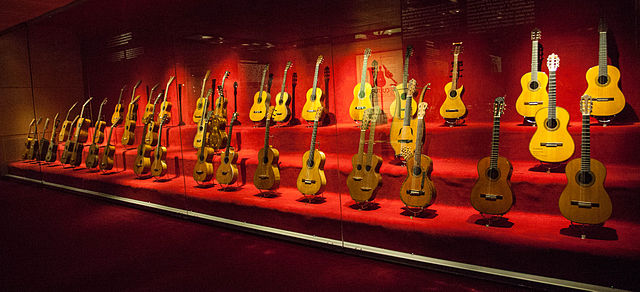A solid-body musical instrument is a string instrument such as a guitar, bass or violin built without its normal sound box and relying on an electromagnetic pickup system to directly detect the vibrations of the strings; these instruments are usually plugged into an instrument amplifier and loudspeaker to be heard. Solid-body instruments are preferred in situations where acoustic feedback may otherwise be a problem and are inherently both less expensive to build and more rugged than acoustic electric instruments.
Fender Esquire 1st prototype in 1949 at Fender Guitar Factory museum
Example : Mid-1970s "Lawsuit Era", solid-body, set neck, Mann/Ibanez electric guitar
The guitar is a stringed musical instrument that is usually fretted and typically has six or twelve strings. It is usually held flat against the player's body and played by strumming or plucking the strings with the dominant hand, while simultaneously pressing selected strings against frets with the fingers of the opposite hand. A guitar pick may also be used to strike the strings. The sound of the guitar is projected either acoustically, by means of a resonant hollow chamber on the guitar, or amplified by an electronic pickup and an amplifier.
Instrument labeled "cythara" in the Stuttgart Psalter, a Carolingian psalter from 9th century Paris.
19th-century guitar made by luthier Manuel de Soto held by Spanish guitarist Rafael Serrallet
Guitar collection in Museu de la Música de Barcelona
The Guitar Player (c. 1672), by Johannes Vermeer






